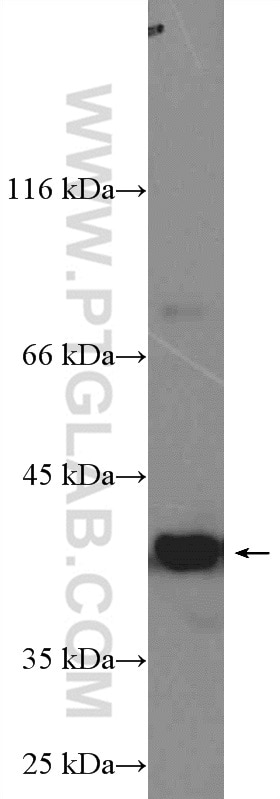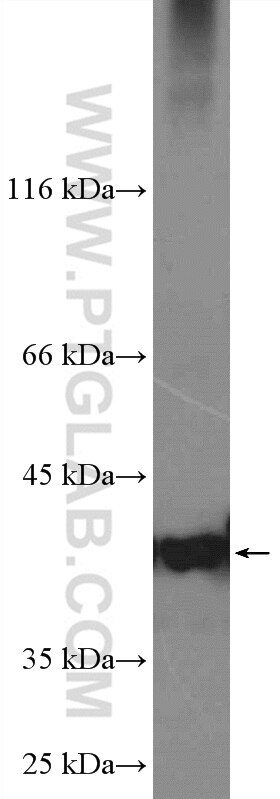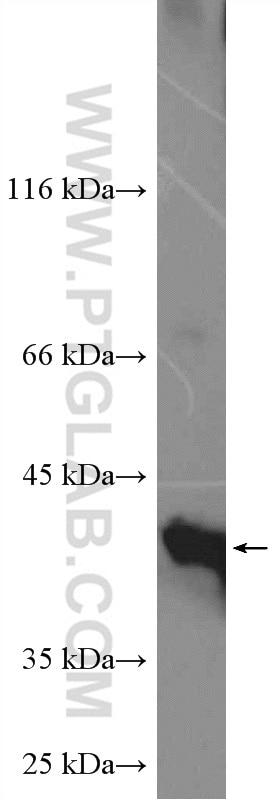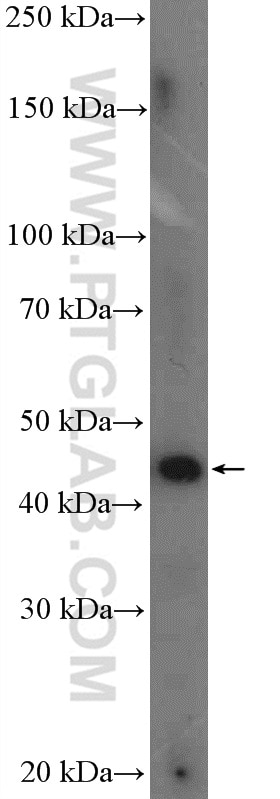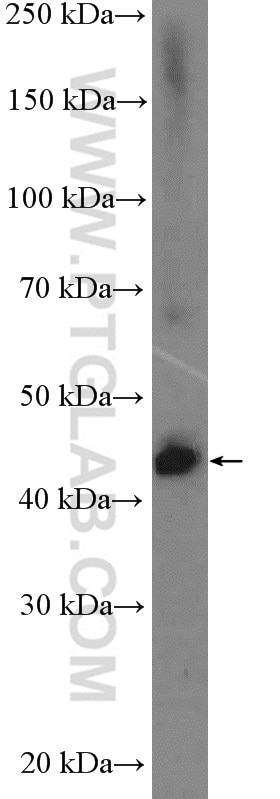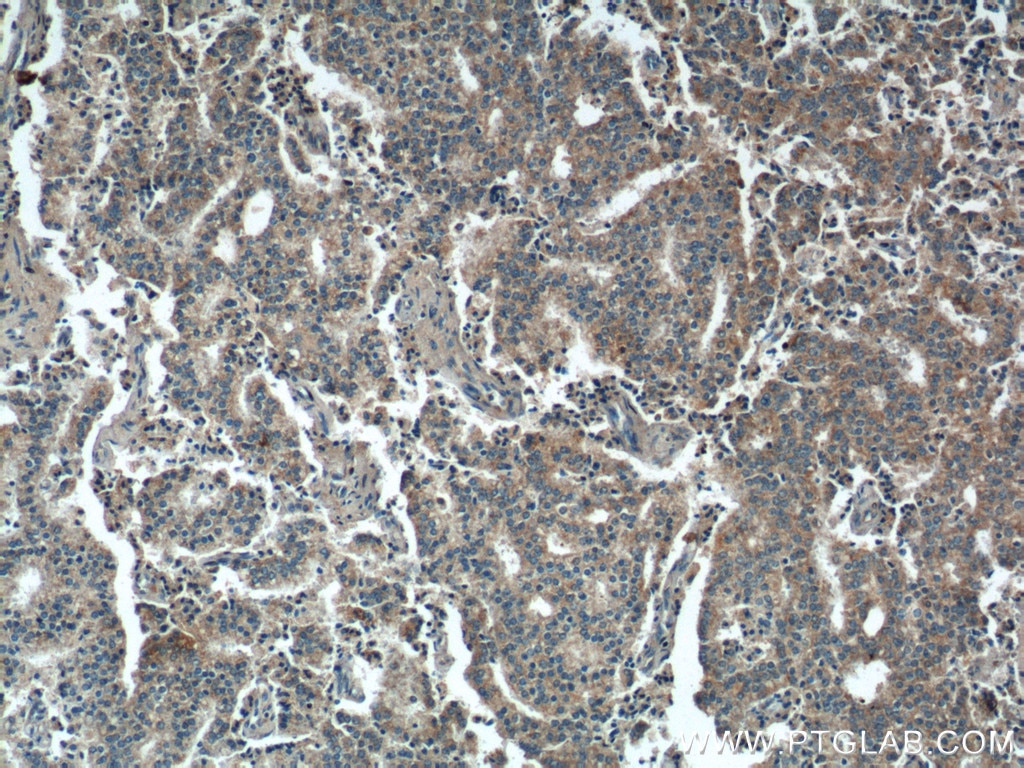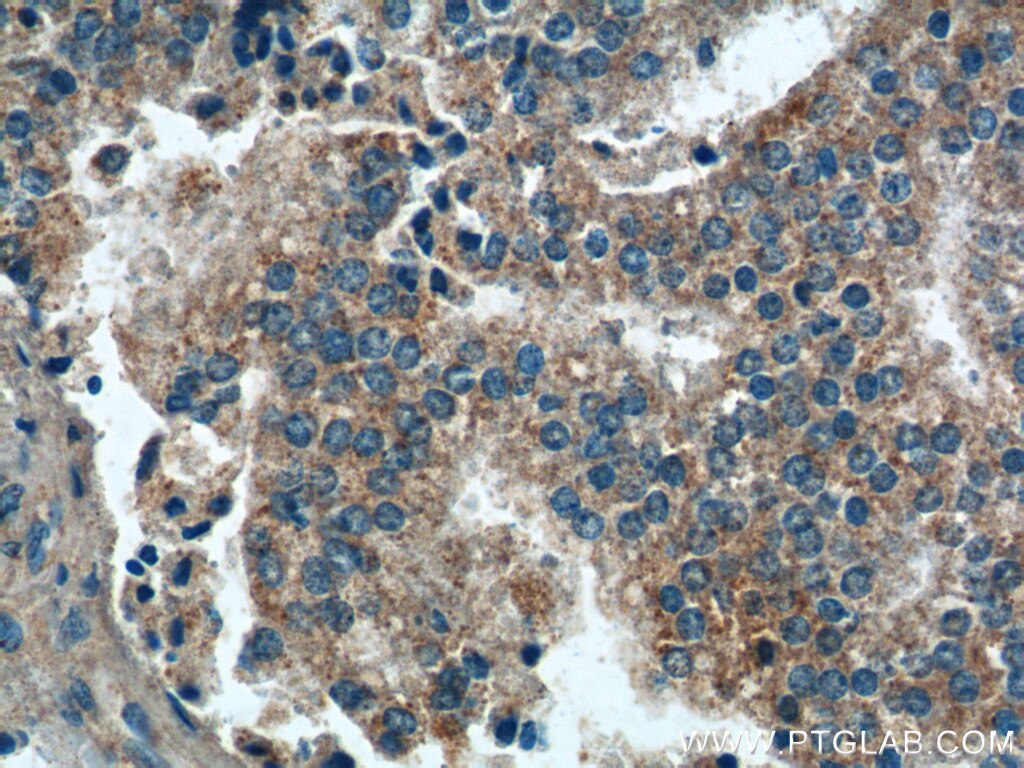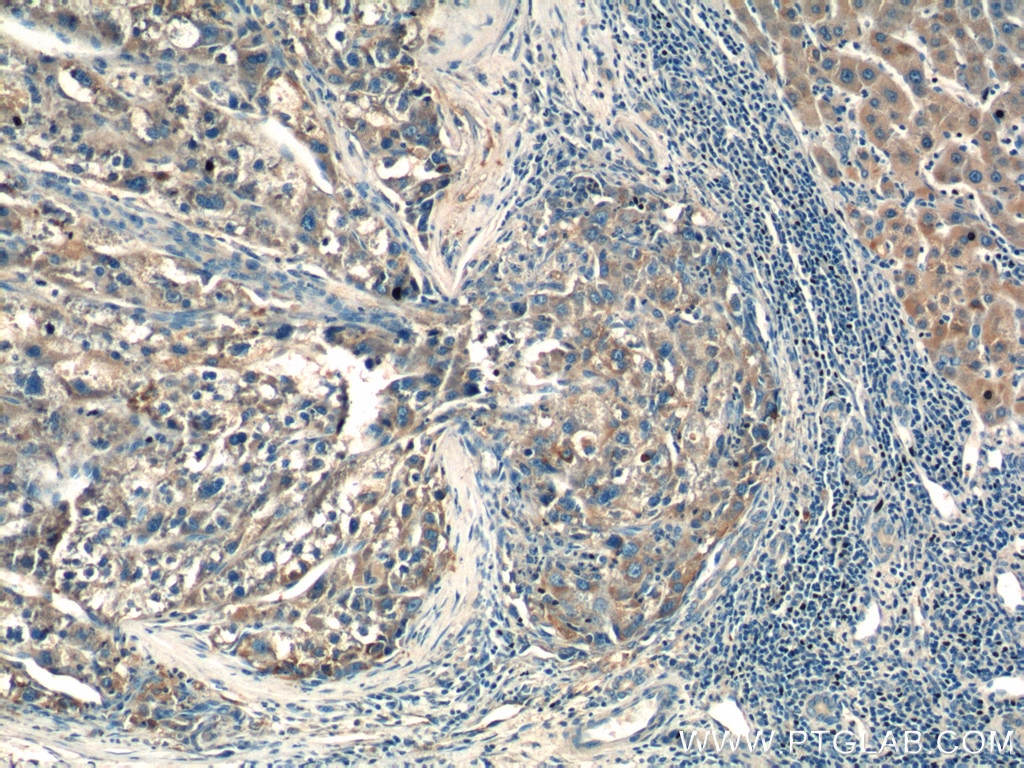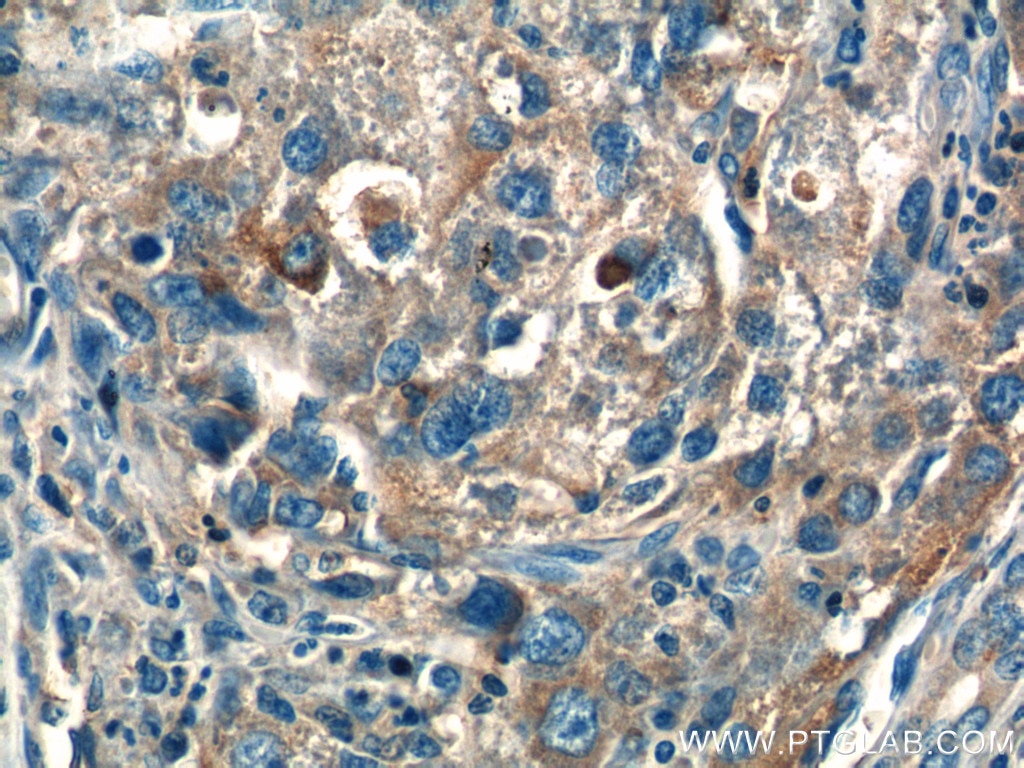Anticorps Polyclonal de lapin anti-PARL
PARL Polyclonal Antibody for IHC, WB, ELISA
Hôte / Isotype
Lapin / IgG
Réactivité testée
Humain, souris
Applications
WB, IHC, ELISA
Conjugaison
Non conjugué
N° de cat : 26679-1-AP
Synonymes
Galerie de données de validation
Applications testées
| Résultats positifs en WB | cellules 3T3-L1, cellules HEK-293, cellules HeLa, cellules Neuro-2a |
| Résultats positifs en IHC | tissu de cancer de la prostate humain, tissu de cancer du foie humain il est suggéré de démasquer l'antigène avec un tampon de TE buffer pH 9.0; (*) À défaut, 'le démasquage de l'antigène peut être 'effectué avec un tampon citrate pH 6,0. |
Dilution recommandée
| Application | Dilution |
|---|---|
| Western Blot (WB) | WB : 1:500-1:2000 |
| Immunohistochimie (IHC) | IHC : 1:50-1:500 |
| It is recommended that this reagent should be titrated in each testing system to obtain optimal results. | |
| Sample-dependent, check data in validation data gallery | |
Applications publiées
| WB | See 4 publications below |
| IHC | See 1 publications below |
Informations sur le produit
26679-1-AP cible PARL dans les applications de WB, IHC, ELISA et montre une réactivité avec des échantillons Humain, souris
| Réactivité | Humain, souris |
| Réactivité citée | Humain, souris |
| Hôte / Isotype | Lapin / IgG |
| Clonalité | Polyclonal |
| Type | Anticorps |
| Immunogène | PARL Protéine recombinante Ag24789 |
| Nom complet | presenilin associated, rhomboid-like |
| Masse moléculaire calculée | 42 kDa |
| Poids moléculaire observé | 36-42 kDa |
| Numéro d’acquisition GenBank | BC014058 |
| Symbole du gène | PARL |
| Identification du gène (NCBI) | 55486 |
| Conjugaison | Non conjugué |
| Forme | Liquide |
| Méthode de purification | Purification par affinité contre l'antigène |
| Tampon de stockage | PBS avec azoture de sodium à 0,02 % et glycérol à 50 % pH 7,3 |
| Conditions de stockage | Stocker à -20°C. Stable pendant un an après l'expédition. L'aliquotage n'est pas nécessaire pour le stockage à -20oC Les 20ul contiennent 0,1% de BSA. |
Informations générales
PARL (Presenilin associated rhomboid like), is a member of the rhomboid family of intramembrane serine proteases that is localized to the inner mitochondrial membrane. PARL has 2 isoforms produced by alternative splicing with the molecular mass of 42 kDa and 37 kDa. PARL regulates mitochondrial remodeling and apoptosis through regulated substrate proteolysis. Proteolytic processing of PARL may result in the release of a small peptide, P-beta, which may transit to the nucleus. The self-regulated cleavage of PARL at positions 52-53 (α-site) and 77--78 (β-site) produce two cleaved forms of PARL named MAMP and PACT with the molecular mass of 36 kDa and 33 kDa respectively (PMID: 14732705, 28178523).
Protocole
| Product Specific Protocols | |
|---|---|
| WB protocol for PARL antibody 26679-1-AP | Download protocol |
| IHC protocol for PARL antibody 26679-1-AP | Download protocol |
| Standard Protocols | |
|---|---|
| Click here to view our Standard Protocols |
Publications
| Species | Application | Title |
|---|---|---|
Cell Rep TIM23 facilitates PINK1 activation by safeguarding against OMA1-mediated degradation in damaged mitochondria | ||
Int J Mol Sci The Mitochondrial PHB2/OMA1/DELE1 Pathway Cooperates with Endoplasmic Reticulum Stress to Facilitate the Response to Chemotherapeutics in Ovarian Cancer. | ||
Cells Disruption of Mitophagy Flux through the PARL-PINK1 Pathway by CHCHD10 Mutations or CHCHD10 Depletion | ||
J Biol Chem Diverse mitochondrial abnormalities in a new cellular model of TAFFAZZIN deficiency are remediated by cardiolipin-interacting small molecules. | ||
Front Pharmacol Heat Shock Transcription Factor 2 Promotes Mitophagy of Intestinal Epithelial Cells Through PARL/PINK1/Parkin Pathway in Ulcerative Colitis. | ||
Nat Cell Biol Small heat shock proteins operate as molecular chaperones in the mitochondrial intermembrane space |
